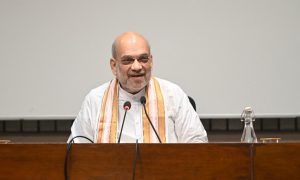State finances showed improvement in 2021-22 as the consolidated Gross Fiscal Deficit (GFD) of 26 states was lower by 31.5 per cent than a year ago. According to the Reserve Bank of India’s annual report for FY22, GFD declined mainly due to higher growth in revenue receipts (30.5 per cent in FY22), as against a contraction of 8.6 per cent in 2020-21.
State government finances were budgeted to improve the GFD-GDP ratio in 2021-22 from 4.7 per cent to 3.5 per cent in the Revised Estimates.
Following the Centre’s move to reduce excise duty on petrol and diesel on November 3, 2021, most states cut their Value Added Tax (VAT) by Rs 1.8-10 per liter for petrol and Rs 2 to 7 per litre of diesel.
The Center released Rs 1.59 trillion in 2021-22 as back-to-back loans to the states. Apart from these loans, the Center has released GST compensation of Rs 60,000 crore. Apart from the regular installment of tax transfer, the Center released two advance installments in November 2021 and January 2022.
Despite the second wave of the pandemic and corresponding state-specific restrictions, capital outlays remained strong. Higher revenue expenditure helped bolster the economic recovery.
Thirteen states received permission to borrow an additional Rs 32,412 crore (till Q2, 2021-22) as an incentive to achieve the target set by the Finance Ministry for capital expenditure.
The Center has increased the outlay under the “Scheme for Financial Assistance to States for Capital Investment” from Rs 10,000 crore in the Budget Estimates to Rs 15,000 crore in the Revised Estimates for 2021-22, the annual report said.
The RBI report said that based on the information available to 20 state governments, their combined GFDs was budgeted at 3.2 per cent in 2022-23, against 3.7 per cent in 2021-22 (Revised Estimates). There are significant variations among states.
The consolidation in the fiscal position of the states can be attributed to the revenue account as the growth in revenue receipts is budgeted at a significantly higher level than revenue expenditure. This has resulted in a 55 per cent compression of the revenue deficit.
Following the recommendations of the Finance Commission, the Center has allowed states to have a fiscal deficit of up to 4 per cent of the Gross State Domestic Product (GSDP) in 2022-23. Of that, 0.5 per cent will be tied to power sector reforms.




























 WhatsApp us
WhatsApp us